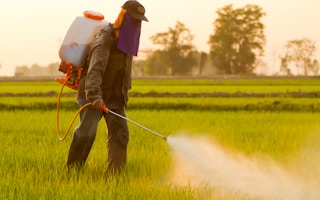Since the development of the science of toxicology in the sixteenth century, its guiding principle has been that “the dose makes the poison.” It is a rule that applies to the medicines used by patients worldwide many billions of times a day. The right dose of aspirin can be a therapeutic godsend, but consuming too much can be lethal. The principle even applies to foods: Large amounts of nutmeg or licorice are notoriously toxic.
The risk that a substance poses broadly depends on two factors: its inherent capacity to cause harm and one’s exposure to it. It is a simple idea, but even some presumptive professionals seem unable to grasp it – as evidenced by the decision by the International Agency for Research on Cancer (IARC), a component of the World Health Organization, to classify the commonly used herbicide 2,4-D as “possibly carcinogenic to humans.”
When it comes to herbicides, the IARC seems to be on a losing streak. The organization recently classified glyphosate, another popular herbicide, as “probably” carcinogenic, a conclusion at odds with those of regulatory agencies around the world.
Similarly, not a single governmental agency has deemed 2,4-D a carcinogen. Earlier this year, the United States Environmental Protection Agency (EPA) concluded that “based on weight of evidence consideration of the available data, 2,4-D would be classified as ‘Not Likely to be Carcinogenic to Humans.’” The European Food Safety Authority also recently concluded that “2,4-D, as currently manufactured, is unlikely to have a genotoxic potential or pose a carcinogenic risk to humans.”
The decision by the IARC to classify substances like 2,4-D and glyphosate as potentially harmful is likely to cause alarm among farmers and consumers, who will wonder about the appropriateness of its continued use in commercial agriculture or gardening. This would be a shame, because these are highly effective and widely used herbicides, and when the IARC makes its decisions, it does not consider whether the substance in question is actually likely to cause cancer in the real world. Its panels do not assess whether a chemical will cause cancer – only if it is capable of causing cancer.
“
These are highly effective and widely used herbicides, and when the IARC makes its decisions, it does not consider whether the substance in question is actually likely to cause cancer in the real world. Its panels do not assess whether a chemical will cause cancer – only if it is capable of causing cancer.
As a result, the IARC has in the past classified aloe vera, acrylamide (a substance created by frying foods, such as French fries and potato chips), cell phones, working night shifts, Asian pickled vegetables, and coffee as “probable” or “possible” carcinogens. This is because it ignores the dosage, failing to consider the likelihood of coming into contact with enough of the substance to cause actual harm. In the case of coffee, for example, one would need to drink more than 50 cups a day, for an extended period of time, before any deleterious effects became likely.
Classifying 2,4-D as a cancer risk to humans ignores extensive research and analysis conducted by health authorities worldwide, including the United Nations WHO/FAO Joint Meeting on Pesticide Residue (JMPR). This body evaluates the risks of substances like 2,4-D, considering real-world variables such as the amounts in soil and nearby water, exposure to animals passing through treated fields, and the potential for direct human contact.
In reviews beginning in 1970, the JMPR has always found that when 2,4-D is applied correctly, it does not pose a health threat to anyone or anything on land or water. This finding has been affirmed by numerous government agencies, including the European Food Safety Authority, the EPA, the US Department of Agriculture, and Health Canada.
When the IARC, which restricts its panels to consider only a narrow spectrum of selected publications, makes a mistaken decision, the effects are harmful. Its rulings give credibility to chemophobic activists looking for headlines and raise the likelihood that substances wrongly labeled as harmful will be replaced by other products that could pose greater risks or provide fewer benefits.
If products such as glyphosate and 2,4-D were to become unavailable, farmers would be forced to resort to other methods to control weeds – none of them as efficient. Indeed, many of the alternatives would be more toxic or require more tillage, resulting in damaging soil erosion, increased CO2 emissions, decreased crop yields, greater production costs, and higher consumer prices.
Nor would the problem be limited to farmers. There are more than 100 prescribed uses for 2,4-D, including the control of invasive weeds on lawns, in forestry, and to enhance safety along highways, power line corridors, and rail lines. The process the IARC uses in coming to conclusions is not only scientifically wrong; it is harmful. Its decisions, which have wide exposure, pose the greatest risk to human and other animal life – at any dose.
Henry I. Miller, a physician, is the Robert Wesson Fellow in Scientific Philosophy and Public Policy at Stanford University’s Hoover Institution. He was the founding director of the Office of Biotechnology at the US Food and Drug Administration.
Copyright: Project Syndicate, 2015.
www.project-syndicate.org


















